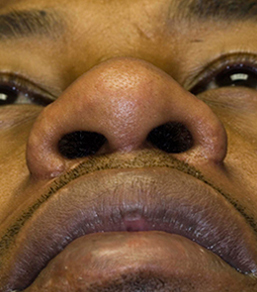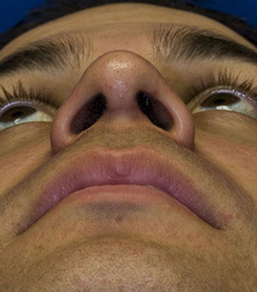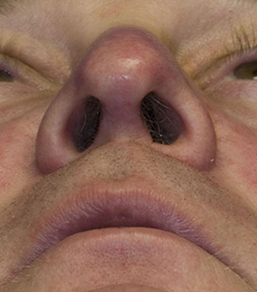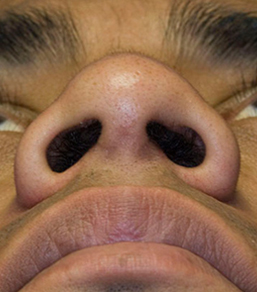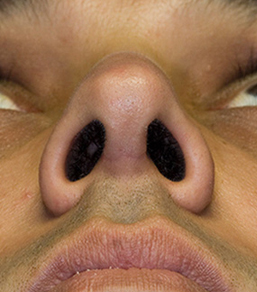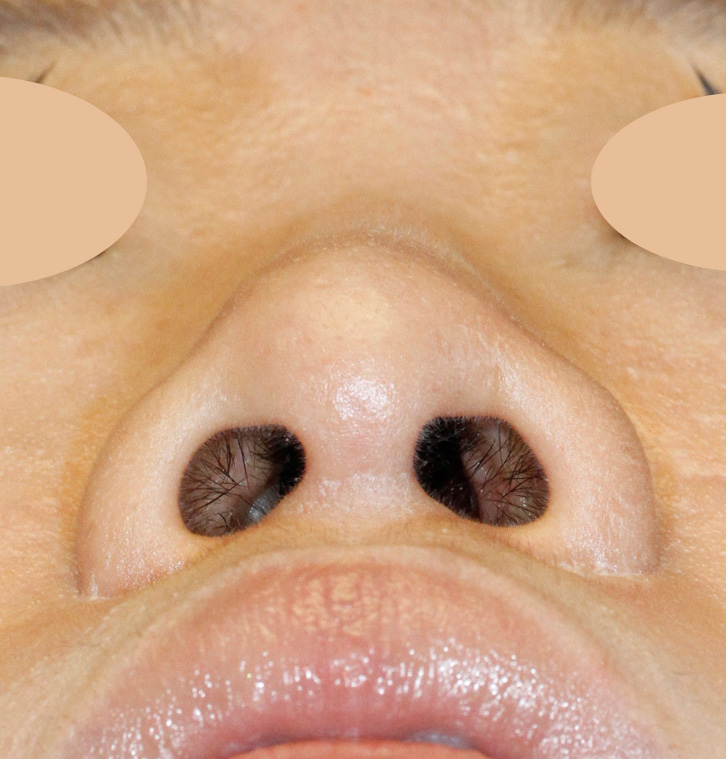Open Versus Closed Rhinoplasty
Find out the differences between open and closed rhinoplasty incisions and the pros and cons of the external versus endonasal surgical approach.
Perhaps one of the most confusing dilemmas confronting the prospective rhinoplasty patient is the choice of whether to have an open versus closed rhinoplasty. For some people this seems to be the case as some surgeons perform either one or the other approach exclusively so when you select your rhinoplasty surgeon you are also deciding on the surgical approach that will be used. To further complicate matters, when researching rhinoplasty incision placement and surgical approaches you will run into a lot of conflicting opinion (from patients and surgeons alike!) about which method is "best" to use. In actuality, the open versus closed terms simply refer to the two possible ways of the accessing the skeletal framework to perform rhinoplasty surgery. Dr. Lamperti uses both techniques and selects the best approach to use based on the goals of surgery and what nasal modifications need to be made.
Endonasal Rhinoplasty: The Closed Approach
In the closed rhinoplasty approach, also called endonasal rhinoplasty, all of the surgical incisions are positioned inside the nostrils such that no part of the incision can be seen externally and a visible scar is avoided. However, since the right and left nostril incisions remain disconnected, repositioning of the nasal skin is difficult and the entire operation is performed through narrow surgical openings with reduced visibility. While a visible scar is prevented there are considerable challenges and technical limitations associated with the relative lack of surgical access, especially when it comes to more complex rhinoplasty maneuvers such as modifying tip shape and position. This is especially the case when a structure-based rhinoplasty philosophy is followed in which nasal support is maintained or improved during surgery using structural grafting techniques.
That being said, Dr. Lamperti finds the endonasal approach to be quite useful in certain situations including when bridge augmentation or minor bridge refinement is performed.
External Rhinoplasty: The Open Approach
The open or external rhinoplasty approach also uses a few hidden internal incisions and adds a small incision that is placed across the columella to connect the right and left nostril incisions. Dr. Lamperti prefers to use an inverted-V mid-columellar incision design (see photo below), whereas other surgeons may use a stair step pattern.

With the addition of this 5 mm or so visible incision, the nasal skin can be folded upward much like opening the hood of a car. This results in direct visibility and excellent access to nearly the entire nasal framework where the individual components of the nose can be evaluated in their natural, undisturbed position. This also affords surgeons the ability to create as much symmetry as possible since the entire nose is able to be visualized at once (rather than through separate incisions on each side of the nose).
The advent of open rhinoplasty has truly revolutionized the treatment of complex nasal deformities such as cleft-lip rhinoplasty, severely deviated noses or severe post-rhinoplasty deformities. Dr. Lamperti prefers to use the open approach in these types of complex rhinoplasties and also in more routine primary rhinoplasty in which tip modification is desired. This would include treatment of a bulbous tip, over-projected tip, droopy tip and pinched tip, for example.
Downsides to using the open rhinoplasty approach
The process of lifting the nasal skin up during open rhinoplasty does tend to lead to more skin swelling compared with using a closed approach. It is also normal to have temporary skin tip numbness that gradually resolves after 8 or 9 months. Dr. Lamperti finds that the long term benefits of using the open approach (when appropriate) outweighs the short term tradeoffs of these temporary side effects.
Why is the open rhinoplasty incision a zig zag?
So why not just make the incision straight across the columella? The main reason to create a more complex-shaped incision is to camouflage the incision. An irregular incision line is much less conspicuous than a straight line.
Still concerned about having an external incision?
It's understandable that you may be concerned about having a scar placed on your nose. In actuality, when properly performed, Dr. Lamperti finds that the open rhinoplasty incision heals exceptionally well and really becomes nearly imperceptible. Dr. Lamperti uses two-layers of sutures to precisely close the incision line during surgery. The deep, hidden layer dissolves on its own after a few months. He then uses multiple, very fine sutures on the outside skin closure which are trimmed one week after surgery.
What Can The Open Rhinoplasty Scar Look Like Once Healed?
To illustrate a range of typical results, below are photos of several of Dr. Lamperti's patients following external rhinoplasty. These include primary and revision rhinoplasty cases, male and female noses, and patients of widely varying ages and ethnic heritage, including patients of Mexican, African American, Dominican, Indian, Iranian and Puerto Rican descent (i.e., all conceivable skin tones). The incisions were closed meticulously and healed beautifully.
I feel great about myself and how I look, and I'm able to breathe through my nose again!
MM - Bellingham, WA View More Patient Testimonials ›Schedule your In-Office or Virtual Consultation with Dr. Lamperti
Thomas Lamperti, MD personally performs all in-office and virtual consultations where you will be able to learn about your customized cosmetic or reconstructive surgery options.

